The Cost of Localising BRICS
Let’s not induce the world to re-hyphenate India and Pakistan
 Bharat Karnad
Bharat Karnad
 Bharat Karnad
|
20 Oct, 2016
Bharat Karnad
|
20 Oct, 2016
/wp-content/uploads/2016/10/Brics1.jpg)
HERE’S A CONTRAFACTUAL: Say, the terrorist attack on the Army camp in Uri hadn’t happened, and the much-trumpeted Indian ‘surgical strike’ in retaliation hadn’t materialised, the Eighth Summit in Goa of the BRICS (Brazil, Russia, India, China, South Africa) group, far from pivoting centrally on the issue of ‘terrorism’ in South Asia, would have debated measures to increase intra-BRICS trade to inure these states against market-induced swings on Wall Street and in London. And discussed ways and means of this group emerging as a forceful political and economic bloc to balance the power of the United States and Western Europe, and to stabilise the international system careening off in different directions. The desire to rise as a geopolitical power house was the impulse behind the formation of BRICS in the first place. These countries had hoped that, as a collective, the group would fill the space previously occupied by the Soviet Union-led Eastern bloc and the ineffectual Non-Aligned Movement in the post-1945 world, and generate synergy.
Sure, Prime Minister Narendra Modi would have still tried in the bilateral talks in the run-up to the summit to impress on the Chinese President Xi Jinping to relent on the matter of Masood Azhar and declare Pakistan a state sponsor of terrorism, and to dilute Beijing’s opposition to India’s entry into the Nuclear Suppliers Group, which Indian officials and media alike insist on calling ‘prestigious’, when actually it is only a trade cartel that retards the comprehensive development of Indian nuclear military and civilian capabilities.
Pushing a singularly Indian agenda at the summit level, however, risked getting egg on the face, which is what happened in Goa. In the Declaration issued at the end of the summit, there was no mention of ‘cross-border terrorism’, nor were the Pakistan-supported terrorist gangs—Jaish-e-Mohammad and Lashkar-e-Toiba named (even as the Islamic State was identified). Modi’s attempts to have the BRICS grouping endorse the Indian position thus failed.
China was the big hurdle, which shouldn’t have surprised anybody. Every indication was available that Xi would not budge from China’s supposedly ‘principled’ stands on these issues. The foreign policy ‘brain bank’ of the Prime Minister’s Office and the Ministry of External Affairs decided nevertheless to push ahead, and ran smack into the Chinese wall.
Physical intimacy with the former KGB agent in Berlin and no-nonsense Russian President, Vladimir Putin, was never on the cards, and just as well, because he had arrived at the summit site determined to recover his country’s position as the top arms supplier to India, failing which to sink Modi’s foreign policy, of which there were hints galore. Russian troops had just ended their first-ever joint exercise with Pakistan army units, and Moscow had sedulously stoked speculation in New Delhi and Islamabad about the flow to the Pakistani military of frontline Russian hardware at friendly prices and about a new and powerful Asian triad in the offing of Russia, China and Pakistan. More pointedly, the Kremlin had disavowed the statement in support of India’s retaliatory action for the Uri strike made by Russia’s ambassador in Delhi, Alexander Kadakin.
There is so great a chasm in the strategic interests and approach to security of the five BRICS countries, the possibility of arriving at a consensus on any issue, except in the most vapid terms, is remote
It was enough to unnerve the Modi Government and get it to agree speedily to deals for big-ticket items that had been hanging fire, but even so, like all India’s military procurement schemes, had not been thought through. Thus, Rs 39,000 crore was committed to buying just five batteries of the S-400 Triumf system that promises an all-in-one air defence solution, able on paper to neutralise airborne threats ranging from drones, combat aircraft, to missiles. Except, optimised for the anti-aircraft mission, it is no more able to neutralise incoming salvos of enemy missiles than the Indian Prithvi interceptor ballistic missile defence system can (or any other extant BMD system, including the Israeli Arrow-2 and the American Patriot PAC-3).
Once he had an agreement for the purchase of high-value armaments in hand, Putin made the requisite reassuring noises, but stopped short of joining the Modi-driven campaign to skewer Pakistan as the ‘mother ship’ of international terrorism. In fact, like Xi, he agreed to nothing more than anodyne statements in the Goa Declaration, such as, ‘We strongly condemn the recent several attacks against some BRICS countries, including that in India’ and calls to expedite the adoption of the Comprehensive Convention on International Terrorism at the United Nations. The Chinese and Russians are no dummies in playing hardball.
While the host country always enjoys some leeway in channelling the summit discussions, overdoing it has its costs. What, for instance, would Presidents of Brazil and South Africa, Michel Temer and Jacob Zuma, respectively, reduced quite literally to sideshows in Goa, have made of India’s almost manic focus on Pakistan-centred terrorism? Even though they might have had a whiff of the direction the proceedings would take under Modi’s ministrations, they must have been surprised to find themselves asked to take sides and join in making India’s anti-Pakistan song the BRICS summit’s signature tune.
Curiously, India’s Foreign Secretary K Jaishankar tried to bring the BRICS states in line by intoning rather sternly on the opening day that “no country can be agnostic on terrorism”. Agnosticism implies a high church and tenets that can be questioned. In this case, the dogma was the coupling of Pakistan and terrorism that would brook no questioning. This was but a short step from pillorying the Islamic Republic of Pakistan and, by extension, Islam as a seedbed of terror. It didn’t work.
Perhaps Jaishankar misspoke. If, on the other hand, he was voicing New Delhi’s seriousness in getting fellow BRICS countries to swallow whole India’s terrorism concerns wrapped in its patent perception of Pakistan as threat, then he was attempting to do something even more tricky and difficult. Seeking to conflate the separate BRICS views of the international security situation with India’s national interest was a politically impossible task.
That the Indian Government expected BRICS to hitch itself to its anti-Pakistan terrorism wagon suggests it is not properly oriented with the international diplomatic landscape
That the Indian Government actually expected BRICS to hitch itself to its anti-Pakistan terrorism wagon suggests it is not properly oriented with the international diplomatic landscape. No country will subsume another country’s threats, even less expend scarce politico-diplomatic capital on issues extraneous to its own immediate interests and realpolitik goals. China has Uyghur nationalism to contend with—a problem that’s going to grow in the future. Especially if, as is already evident, stalwart jihadis—veterans of singularly violent wars against the unbeliever in locations as diverse as Iraq, Libya, and Afghanistan—trickle back home, there to use their expert knowledge and experience of guerrilla fighting, Kalashnikovs, and improvised explosive devices to formally wage a brutal war for an independent East Turkestan in the western Chinese province of Xinjiang. But this prospect, while alarming, cannot prompt Beijing to give up on Pakistan, a most useful strategic ally in riling its two prime adversaries, India and the US, and affording it a gateway to the Indian Ocean.
Moscow, on its part, has dealt with Islamic dissidents in its Muslim enclaves in the Caucasus—Chechnya, Dagestan and Ingushetia—with rough and ready methods, and has generally succeeded in forcefully pacifying these peoples, at least for the nonce. Brazil has no terrorist problem and Muslims in South Africa are part of the Indian diaspora dating to the mid- to-late 19th century, who inspire less friendly feelings than resentment in the majority Black population. Modi’s move to make Kashmir-centred terrorism the preoccupation of the BRICS summit was, therefore, a stillborn initiative that did not have a spitball’s chance in hell. The consolation was that Brazil (whose nearest brush with terrorism were the Tupamaro urban guerrillas active in neighbouring Uruguay up until the 1970s) and the heads of state of Bangladesh, Myanmar, Sri Lanka, Bhutan and Nepal who were in Goa to liaise with their BRICS counterparts, were prevailed on to condemn Pakistan’s support for terrorists.
There is so great a chasm in the strategic interests and the approach to security of the five BRICS countries, the possibility of arriving at a consensus on any issue, except in the most vapid terms, is remote. That leaves only the economic sphere where there’s some movement. So, small achievements, such as the setting up of a credit rating agency to help the BRICS’ offshoot, the New Development Bank, to function better, were duly celebrated in Goa. But this group has yet to acquire economic salience because BRICS doesn’t act as a single economic-cum-negotiating unit since the economic interests of constituent states too diverge greatly.
The potential is huge though. According to the BRICS page on the Ministry of External Affairs site: ‘In 2015, BRICS countries accounted for a total nominal GDP of [$]16.92 trillion, equivalent to 23.1% of world GDP. Their territories are home to 3.073 billion inhabitants (53.4% of the population). Its exports amounted, in 2014, US$3.48 trillion. Imports in that same year amounted to US$3.03 trillion. Since 2001, the BRICS have more than doubled their share of world exports. In that year, the group represented 8.1% of world’s total exports; in 2015, they accounted for 19.1% of that total.’
But, intra-BRICS trade constitutes only a small part of the global trade, and is skewed. While it grew 163 per cent between 2006 and 2015, from $93 billion to $244 billion, the bulk of it was in the two dyads—China-India and China-Russia. Modi has projected the trade figure to touch $500 billion by 2020 at a time when serious disagreements have surfaced at the 15th G-20 economic summit held in Hangzhou, China, just last month over market distortions induced by hidden and indirect state support that Beijing is said to have used to sustain high levels of Chinese exports. On this issue, India sided with the United States and Europe against China. Xi made his by-now- stock promise to ease access to the Chinese market by Indian exporters, a promise his regime has made to the US and European governments as well. India’s trade imbalance with China is currently valued at $50 billion (of the total bilateral trade of some $70 billion). The fact is that an inequitable trade regime within BRICS fundamentally undermines the possibility of realising the group’s potential economic clout.
But the Goa summit will be remembered mainly as India’s futile efforts at localising BRICS. Prime Minister Narendra Modi sets a great deal of store by international summits and conferences. But unless he stops trying to convert every multilateral and bilateral meet into a diplomatic slugfest targeting Pakistan, not only will India’s larger interests not be served, but it will induce the international community to re-hyphenate India and Pakistan. When Indian foreign policy is so imbued with parochial concerns, it is hard to imagine it accomplishing much beyond affording extra-territorial big powers the opportunity to intervene and shape the outcomes they desire.

/wp-content/uploads/2025/01/Cover_Kumbh.jpg)





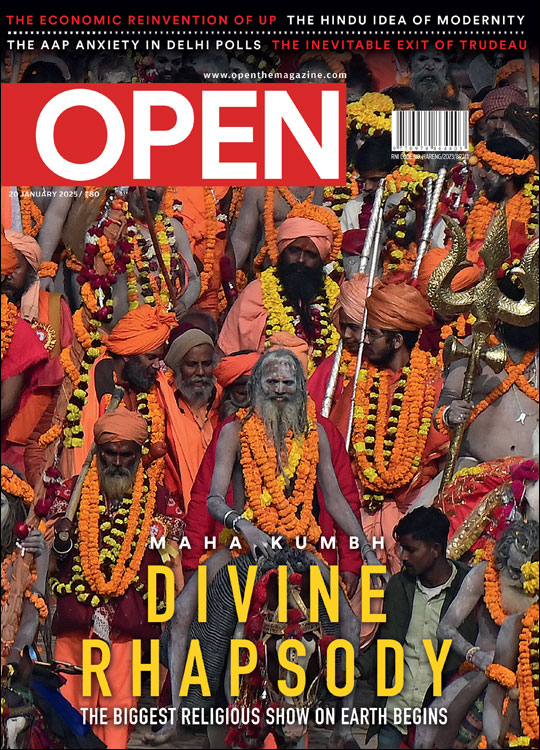

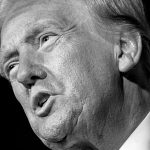
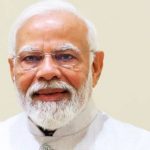
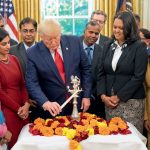

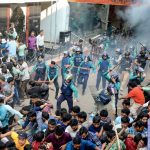

More Columns
The 90 Hour Work Week Equation Madhavankutty Pillai
The Arctic Great Game Sudeep Paul
Why PM Modi picked Nikhil Kamath for his podcast debut V Shoba